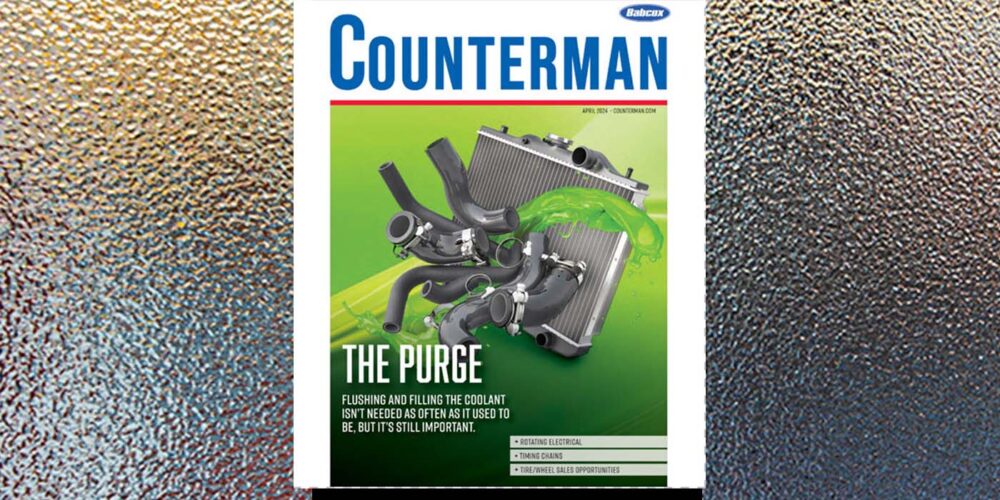In 1990, a quiet revolution began in the automotive service industry. In short, The Clean Air Act of 1990 introduced a new set of emissions control standards that would become known as the On-Board Diagnostics II (OBD II) powertrain management system. After partially integrating OBD II with their proprietary OBD I systems during the 1994-’95 model years, auto manufacturers began producing the current OBD II powertrain management system in the standardized version that was federally mandated for introduction during the 1996 model year.
Under OBD II, the computing capacity of the OBD I computer or powertrain control module (PCM) was roughly doubled in size. In addition, OBD II was designed to detect any electronic or mechanical malfunction that would increase exhaust or evaporative fuel emissions more than 1.5 times than the Federal Test Procedure (FTP) standard. The emissions-related functions of OBD II were increased to include monitoring automatic transmission, catalytic converter and fuel tank operations.
GAPING HOLES
As unlikely as it may seem, the current Right to Repair controversy found its roots in OBD II. Shortly after OBD II was introduced in 1996, technicians began to notice their aftermarket repair information systems seemed to have some gaping holes in diagnostic and operational information. Not that gaping holes hadn’t been noticed on early OBD I engine management systems; they had. But, in contrast to OBD I, the complexity of OBD II was compounded when auto manufacturers began to network OBD II with non-emissions related, computer-controlled systems like anti-lock braking systems (ABS), anti-theft, airbag, four-wheel drive and air conditioning systems.
After implementing OBD II, vehicle manufacturers began to realize the benefits of integrating OBD II with non-emissions related modules containing a basic logic system. These modules are networked to each other by one- or two-wire bus communications systems that allow the modules to share information with each other. Thus a single-wheel speed signal from an ABS system may be shared or networked with the PCM, air bag, automatic transmission, four-wheel-drive transfer case and body control modules. The technology that had been initially intended as a comprehensive emissions failure detection system spilled over into mundane operations like timing out the interior lighting and locking the doors at 25 mph.
THE TOWER OF BABEL
The complexity of multiplexed, networked, electronic control systems became mind-boggling to the average technician. In a single leap, on-board diagnostics jumped from 30 or 40 two-digit diagnostic trouble codes (DTCs) found in the OBD I systems to the hundreds or thousands of four-digit DTCs found in OBD II and its related on-board diagnostic systems. Whereas OBD I used perhaps three two-digit trouble codes to describe oxygen sensor operation, OBD II used as many as 30 four-digit DTCs to describe the failures associated with as many as six separate oxygen sensors. Worse still, technicians were confronted, not only with the EPA-mandated "generic" P0000 series of powertrain DTCs; they were also confronted with the manufacturer-specific or "enhanced" P1000 powertrain DTCs. And then another series of trouble codes began to appear, such as the "B" or body-control codes, the "C" chassis or anti-lock brake codes and the difficult to understand "U" or network communication system codes. For the average technician, this multitude of trouble codes became a veritable "Tower of Diagnostic Babel."
This fundamental leap in technology brought its challenges to four different sectors of the aftermarket. First, the quantity of information had multiplied in such a geometric fashion that the traditional aftermarket hard-bound shop manuals became obsolete. In their stead came condensed OE information in the various forms of aftermarket CD-ROM, DVD and high-speed Internet information delivery systems. Second, aftermarket test equipment manufacturers were abruptly challenged to incorporate enough diagnostic capacity in their scan tool platforms to diagnose the new networked technology. Third, aftermarket parts manufacturers began to realize that they needed encoded information from the auto manufacturers to duplicate the chip-based components that were rapidly proliferating throughout vehicle platforms. Fourth and last, without the voluminous, readily available and application-specific OE information, the independent shop owner and auto technician found themselves essentially locked out of many technology-based repairs, such as reprogramming or initializing new or replacement on-board computers and modules.
INFORMATION AVAILABILITY
There are many throughout the independent sector who still believe they’re being denied service information by automobile manufacturers. In some cases, that belief might be true because a number of issues remain concerning the full disclosure and user-friendliness of various manufacturer Web sites. In other cases, especially concerning vehicle immobilization or anti-theft devices, negotiation continues on how to make this information available to responsible and perhaps bondable independent locksmiths and repair shops. Last, concerning nascent technologies like body control diagnostics, the information isn’t always complete or accurate simply because OE diagnostic strategies haven’t always kept up with the introduction of new systems and technologies.
Of course, the automotive service industry has become an information-based industry. Unless a technician specializes in a specific vehicle line, it’s a standard operating procedure for the service writer or technician to print out an average of a dozen pages relating to technical service bulletin, recall, diagnostic and repair information for even the most routine repair job.
To become more information-efficient, some independent shops are beginning to specialize in only one or two vehicle lines. Most of these specialized shops are also buying the OE scan tools and using the OE Web site as their sole source of service information. The bottom-line result is that technicians increase their productivity by becoming very familiar with OE technology and information supply systems.
The shock to the aftermarket service sector is understandable. Most shop owners and managers began their careers in a day when the average auto mechanic was a semi-literate person who memorized most of the information needed to repair the mechanically operated powertrain and comfort control systems of the day. In modern times, however, today’s state-of-the-art technician is a very literate, college-level intellectual who has become very experienced in dealing with the abstract issues presented by modern electronic operating systems. Call it "rocket science" if you will, but that term very aptly describes the information requirements of today’s modern independent auto repair shop.







